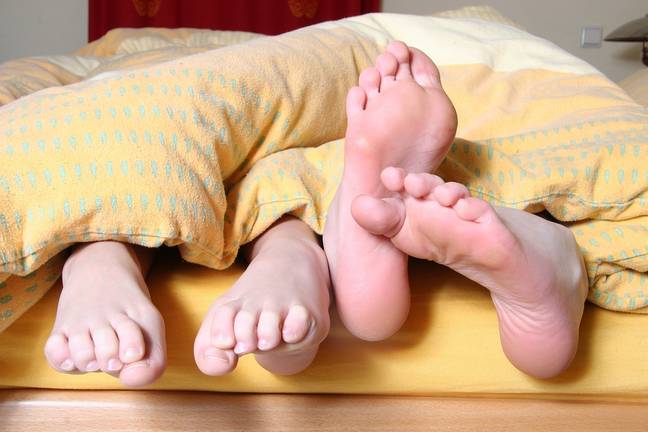— A fulfilling sex life is still possible during and after treatment for prostate cancer.

By Larry Buhl
Every type of prostate cancer treatment has the potential to negatively affect sexual function and may impact fertility. But there is good news: A variety of therapies make it possible to have an active and fulfilling sex life during and after prostate cancer treatment, even if it means slightly reimagining what it means to have good sex. If your sex life has been altered by prostate cancer treatments, some unwanted side effects like erectile dysfunction have been known to improve over time, according to Johns Hopkins Medicine.
How Does Prostate Cancer Affect Sexual Function?
Strictly speaking, prostate cancer itself doesn’t affect sex, and you likely won’t have sexual side effects from prostate cancer, at least in the early stages, according to the American Cancer Society. But you could have some frustrating side effects from the treatments for prostate cancer.
The prostate is surrounded by nerves, muscles, and blood vessels that help produce an erection, but the prostate isn’t required for an erection or orgasm. However, the prostate and seminal vesicles are required for ejaculation and fertility. Some cancer treatments may affect the ability to get an erection and ejaculate.
Sexual Side Effects of Prostate Cancer Treatments
Prostate Surgery
It’s important to understand that orgasm and ejaculation are different physical reactions, although they often happen at the same time. Because the prostate and seminal vesicles are removed in a prostatectomy, no ejaculation can happen, but an erection and orgasm can happen. Sometimes the climax is called a dry orgasm because there is no semen.
Typically, a surgeon will attempt a sparing prostatectomy to save the neurovascular bundles on the side of the prostate that are necessary for erections and orgasms. But sometimes these nerves are damaged in surgery, which could diminish the ability to get erections or keep them.
If there is nerve damage, erectile dysfunction can improve over time even without intervention, according to Raevti Bole, MD, a urologist and specialist in men’s health at the Cleveland Clinic. “In general, patients notice the biggest impact on their erections right after surgery, then start to see improvements for up to two years after surgery,” says Dr. Bole.
There’s also the potential for another frustrating side effect of surgery: climacturia, or orgasmic incontinence. This is when a bit of urine leaks out during arousal. It is treatable through bladder training and exercising the pelvic floor muscles, or Kegel exercises.
Radiation
Although the goal of radiation therapy is to deliver the treatment to only the areas affected by cancer, sometimes it affects nearby nerves as well. When this happens, the nerves may not send a signal to have an erection. Unlike a prostatectomy, for which the biggest impact is right after surgery, the effects from radiation, if they happen, may occur over the course of years.
“Patients who have radiation can still orgasm and ejaculate, but often their ejaculate is diminished because, over time, the seminal vesicles in the prostate don’t produce semen like they used to,” says Scott Shelfo, MD, the medical director of urology at City of Hope in Atlanta.
Chemotherapy
Chemotherapy is unlikely to cause erectile dysfunction, though it does have other side effects, such as fatigue and hair loss. Chemotherapy can, however, lower testosterone levels during the treatment period, per the National Cancer Institute, which leads to decreased libido. Chemo is always given in conjunction with hormonal therapy.
Hormone Therapy
Hormone therapy is used to stop the progression of cancer by significantly reducing testosterone, which can affect libido. With lower testosterone, the desire to have sex decreases. Low testosterone, or low T, can also affect the quality of erections, even though it isn’t physically affecting the sensory nerves. Testosterone is important for maintaining rigidity as well.
But patients with prostate cancer aren’t likely to be on hormone therapy for life. The length of time depends on the aggressiveness of the cancer. If you’ve been on hormone therapy for a while and the cancer is under control, you might have a discussion with your oncologist about taking a “hormone holiday,” according to Bole. “But there will still be intensive monitoring to make sure you’re doing it safely,” Bole says.
Common Questions About Sexual Side Effects of Prostate Cancer
Can You Function Sexually Without a Prostate?
There is life after prostate cancer, and you absolutely can have sex after a prostatectomy, although the quality of the sex depends on how well the nerves that stimulate erections and lead to orgasms survive the surgery.
Regardless of any possible damage to the nerves around the prostate, the sensory nerves, which are different from the ones that control erections, remain untouched by surgery. This means that the process that leads to arousal, but not necessarily erections, shouldn’t change.
Can You Get an Erection if You Have Prostate Cancer or Had Your Prostate Removed?
Yes. The nerves that control erections run along the back of the prostate. As long as the cancer has not invaded those nerves, your surgeon will make every effort to peel the prostate gland from those nerves without doing damage to them.
“If the surgeon does a good prostatectomy, and the patient had good erectile function before it, they have a better chance [of avoiding erectile dysfunction],” says Dr. Shelfo. Of course, if you had erectile dysfunction before prostate removal, chances are that you’re still going to have it after the procedure.
Can You Ejaculate After Prostate Removal?
No. Once the prostate is removed along with seminal vesicles, you can’t ejaculate.
Does Sex Feel Different After Prostate Removal?
Sex after prostate removal might feel different for some people. People with intact prostates often ejaculate and orgasm at the same time, although they are actually different processes. With prostate removal, erections and orgasms should be unchanged, unless the nerves around the prostate are damaged.
But Bole, who surveys patients after surgery, found that some patients find a dry orgasm after prostate surgery less satisfying, adding that same-sex couples may have issues if one partner is lacking a prostate. “For men having receptive anal intercourse, where the prostate is a source of pleasure, having the prostate removed definitely changes the sexual experience,” Bole says.
Can Prostate Cancer Affect Fertility?
Prostate cancer itself won’t necessarily affect fertility, but prostate removal definitely will. When the prostate and seminal vesicles are removed, there can be no ejaculation, which is necessary for fertility.
Sperm is still being produced, however. It’s possible to retrieve sperm surgically though a testicular biopsy for use in assisted reproductive procedures like in vitro fertilization.
Because the average age of prostate cancer diagnosis is 66 years old, according to Cancer.Net, many patients with prostate cancer will be past the age of wanting to conceive.
With other treatments that leave the prostate in place, there may be an impact on erections, depending on whether the nerves that lead to arousal are damaged. However, if you have a prostate, it is possible to ejaculate without a full erection, according to UCLA Health.
Treating Erectile Dysfunction Caused by Prostate Cancer
Nearly all patients will experience some erectile dysfunction after a prostatectomy. How long it lasts depends on age, overall health, and the amount of damage done to the nerves surrounding the prostate, says Johns Hopkins Medicine.
Some erectile dysfunction treatments include the following:
- Medications Sildenafil (Viagra), vardenafil (Levitra), and tadalafil (Cialis) will help if the issue is getting blood to the penis but won’t be effective if the nerves have been damaged by surgery or radiation. This class of drugs won’t help with low libido.
- Vacuum Erection Device Also called a penis pump, the device pulls blood into the penis. It can be effective for men who can get an erection but can’t maintain it.
- Penile Injection Therapy You give yourself a shot at the base of the penis with a mixture of alprostadil, phentolamine, and papaverine (Trimix) to open the blood vessels in the penis and help achieve an erection.
- Penile Implants These devices placed in the penis to get an erection are sometimes recommended when other treatments for erectile dysfunction fail.
“I always tell my patients, When there’s a will, there’s a way for you to get a firm enough erection for sex,” says Shelfo.
In addition to these interventions, lifestyle changes such as quitting smoking and cutting back on drinking can improve the ability to get an erection, per Cancer Research UK. This is also true for men with erectile dysfunction not related to prostate cancer treatment.
Reimagining Good Sex
Many men believe that good sex involves an erect — and constantly erect — penis, as well as an orgasm and ejaculation. But Bole says that if there are unwanted sexual side effects of prostate cancer treatment, it’s possible to imagine different ways to be sexual.
“Sexual therapy, psychology [experts], and couples counseling can help patients communicate with their partners about what they’re going through and explore other ways to be intimate and express affection,” she says.
Any kind of treatment for cancer can affect not just your anatomy and sexual function but also the way you feel about yourself. Bole says that it’s important to speak with doctors before treatment for prostate cancer about what kinds of sexual changes can be expected. “A lot of times, when the oncologist identifies a problem, they are good at reaching out to get the patient a consultation with someone like myself or one of my partners who specializes in talking about some of the [symptoms] that might not be brought up during an oncology-focused visit,” says Bole.
Complete Article ↪HERE↩!






























You must be logged in to post a comment.